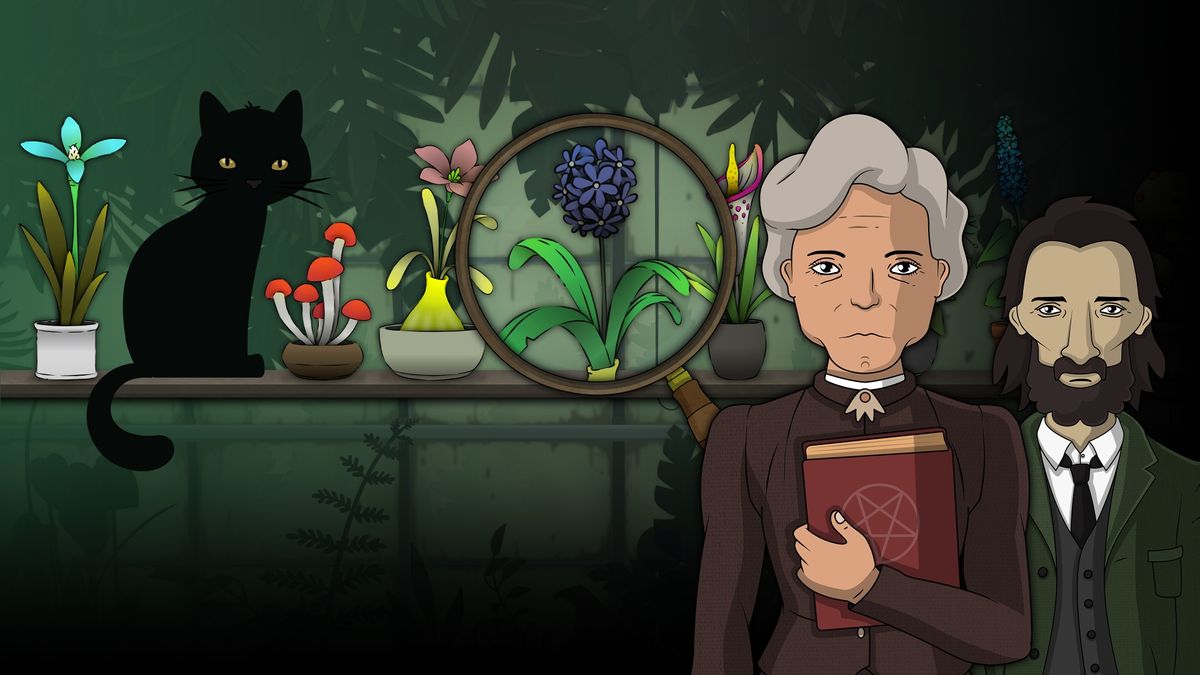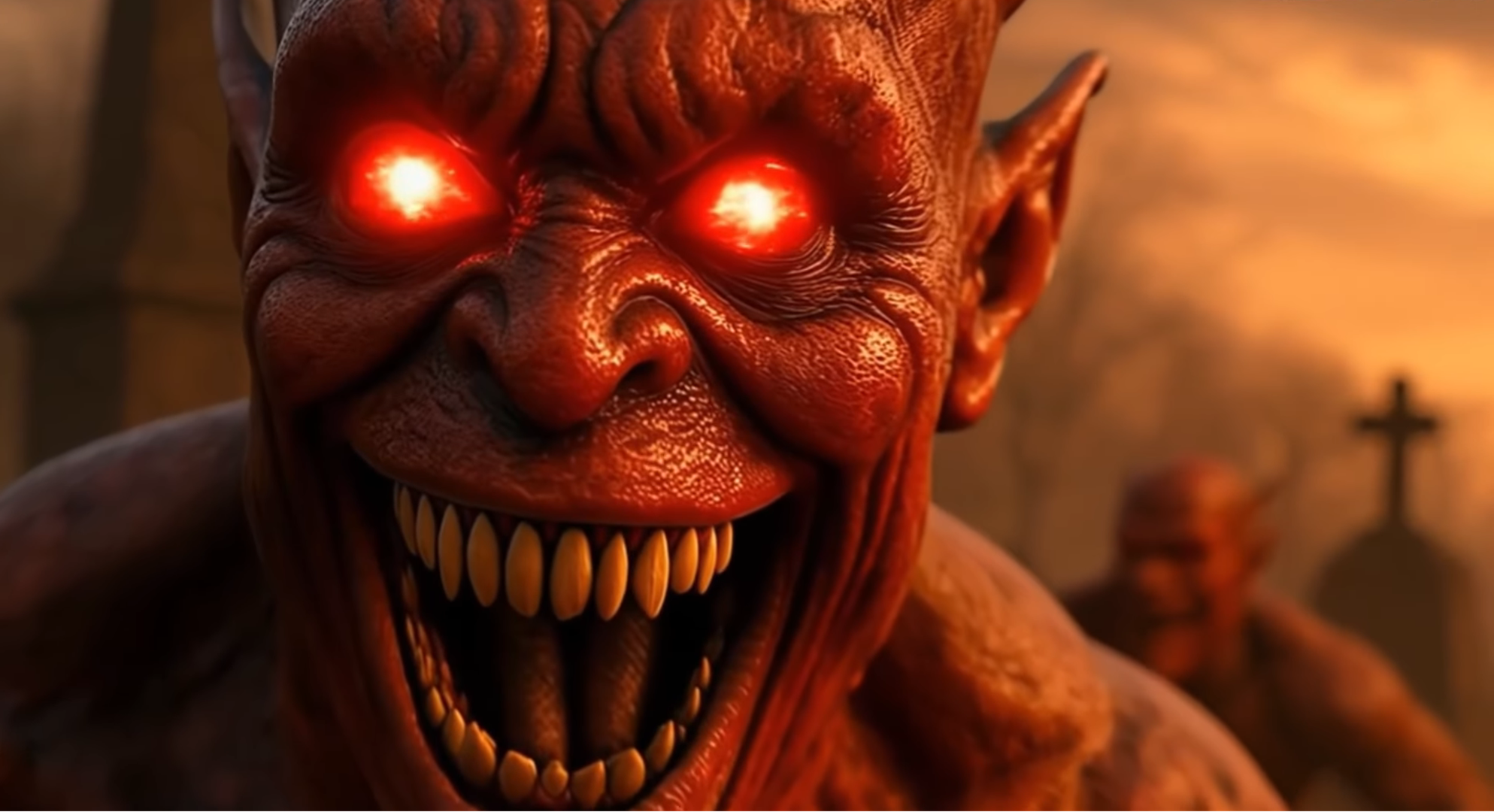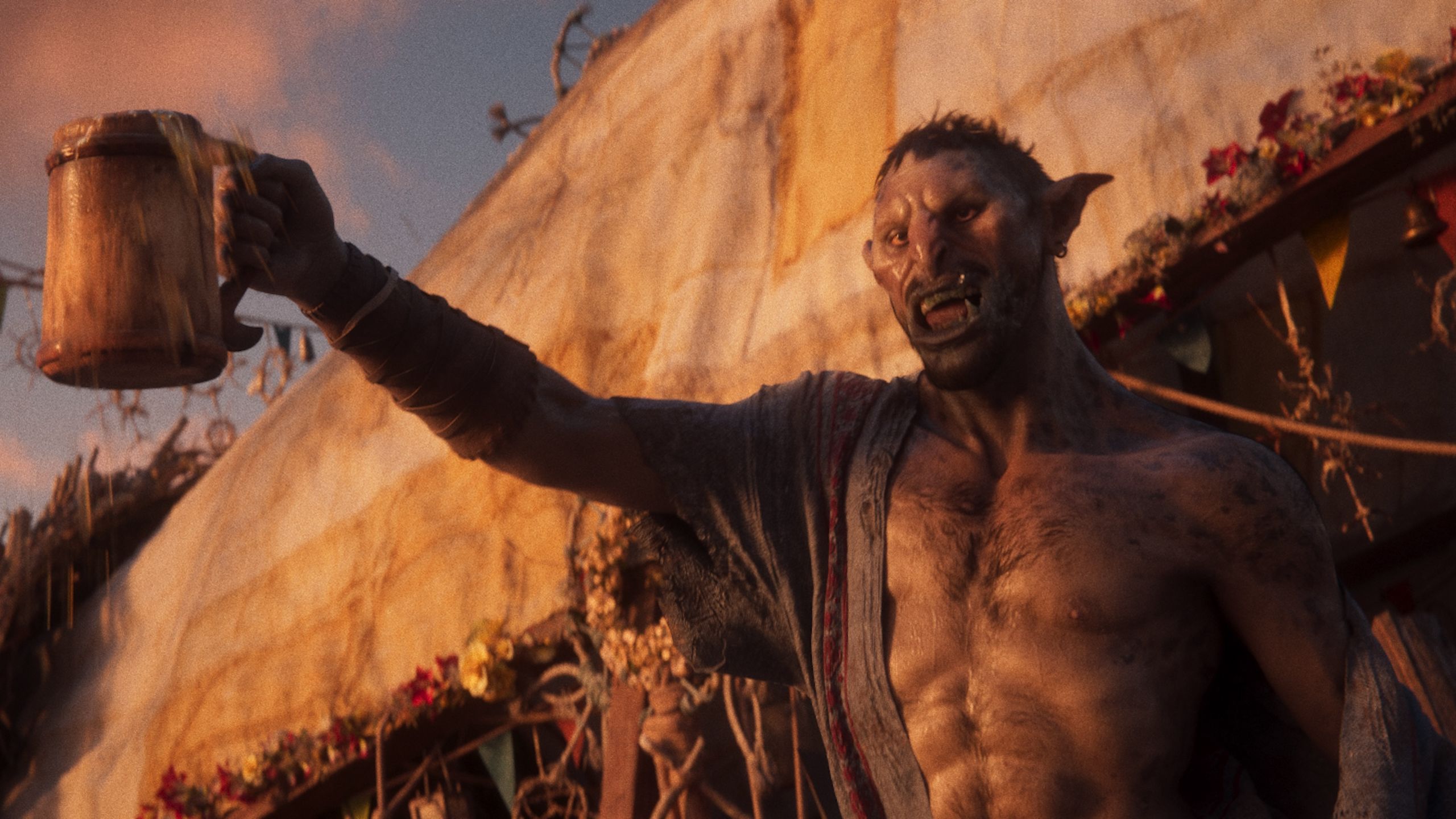Strange Horticulture sets you as much as believe it’s another relaxing video game about running a store– a puzzle video game where you snap through your book of plants, take a look at the fungi and ferns and discover the best medical herb or ornamental flower for each consumer. Slowly, as it goes on, Strange Horticulture trowels a layer of sneaking fear over this wholesome setup. A narrative outgrows it, a story of secret and routine murder that plays out through the consumers, no less unusual than the gardening, who keep going back to your store.
Though Strange Horticulture didn’t come totally out of no place, having a demonstration at Steam Next Fest in 2021 that made everybody’s list of favorites, it was still a surprise simply how great the completed video game ended up being. Chris Livingston offered it a rating of 90 and called it “the best detective game I’ve played in years”.
Development studio Bad Viking is 2 siblings, Rob and John Donkin, who in fact have more than a years of advancement history behind them. Nobody saw since nearly all of it took place worldwide of Flash video games.
On an ancient web without social networks, with expensive download limitations and legions of trainees with absolutely nothing much better to do, sites like Newgrounds, Miniclip, Armor Games, and Kongregate were the locations to choose totally free video games. You didn’t require a lightning-fast connection speed to play Line Rider orThe Last Stand And you didn’t require to be a specialist developer to make one of your own. Rob Donkin was still a college student when he made Pondskater (opens in brand-new tab), a video game about consuming flies and evading bees, gathering power-ups like an installed gatling gun to shoot bees with. In the animation video games that controlled Flash, that example was quite typical.
“I had fun making it,” Rob states, “and it was fun to be able to just release it and people would actually play it straight away, which you kind of can’t do anymore. But that was the good old Flash days—you just chuck stuff online and people start playing it and tell you how silly it is.”
His follow-up, Panda Tactical Sniper, was similarly ridiculous. “You were a sniper and the panda would tell you stuff to shoot. It was pretty weird, but people loved it. That was quite a successful game, and that got me a sponsorship. I suddenly realized, ‘OK, you can earn money from this,’ and went straight into doing that full-time out of uni.”
Sponsorships suggested including an offered web website’s branding to your video game, typically a pre-loading logo design and a “play more games” link that resulted in their website. For numerous years Flash sponsorships were a good method to make money as a bed room coder. When Rob’s sibling John lost his task in the movie market, Rob welcomed him to attempt his hand at video game style too.
Their initially joint release was The Adventures of Red (opens in brand-new tab), an experience video game where you fixed puzzles on a mission for a chocolate muffin. It acquired a good gamer count and recommended they made a great group. “We just sort of stuck with it and started making more Flash games and then set up our company together,” John states. “We’re still here 10 years later, which is remarkable really.”
… we didn’t actually understand how to put a video game on mobile and have it grow naturally
Rob Donkin
“In those days it was so much easier,” Rob states. “Now, if you want to make money from games, starting out, I don’t know how you do it because there isn’t that model of ‘make stuff in a couple of months, put something out there’.”
Pondskater took just weeks to make, and even the advanced video games the 2 made together were finished and launched rapidly enough they might spend for themselves in a brief quantity of time. “There’s nothing comparable really to that now,” Rob goes on. “I guess you can look at the mobile market and, yes, you can churn stuff out quickly there, but to actually compete with anyone…”
Trowel and mistake
Bad Viking’s very first “big success” was Bad Eggs Online, a multiplayer video game about eggs at war, “an artillery game based on Worms, essentially,” John states. They followed it with a follow up for mobile, Bad Eggs Online 2, and regardless of Rob’s remark about the trouble of completing in the mobile market, John keeps in mind that individuals “are still people playing it to this day.”
They were encouraged to take a look at other platforms when, as Rob puts it, “the Flash game market started drying up.” Adobe and Microsoft stopped supporting it at the end of 2020, and Chrome stopped supporting it at the start of 2021. Though the siblings might have continued making mobile video games, they associate the success of Bad Eggs Online 2 on phones to the reality the very first video game discovered an audience onFlash “We brought them over to mobile and then it grew from that,” Rob states,”but we didn’t really know how to put a game on mobile and have it grow organically, or market it or anything like that.”
What they understood was PC video gaming, which likewise looked like an ideal location to try something a little bit more enthusiastic. “I guess we wanted to do something a bit bigger as well,” Rob states. “We wanted to try to handle a PC game for the Steam market, because we hadn’t released anything on Steam.” Their very first effort was another weapons video game, this time with a simple military style, calledBroken Ground “It was basically like Bad Eggs, but a bit more grown up.”

It introduced in April of 2018, and precisely 5 months later on they revealed they were closing down the servers. Broken Ground was their very first genuine failure. “We took what we’d learned from Bad Eggs and we tried to apply it to a Steam market,” John states, “and the backlash there was huge. They don’t like microtransactions.” A free-to-play video game, it included weapon packs for sale, that made gamers implicate it of being ‘pay-to-win’. “We tried to just make it variety-based, rather than ‘you can buy overpowered weapons’. It wasn’t like that, but people didn’t see it that way.”
The experience turned them off making another video game in the very same vein. “After Broken Ground we were very jaded with multiplayer in general,” John states. “It’s a lot of work. You don’t get much positivity in the community. It’s very toxic, is multiplayer.”
“Especially competitive multiplayer,” Rob includes. And so they made a singleplayer video game rather. While Flash had actually been flexible, with its low expense and brief advancement times, now they were dealing with the problem typical to indie designers: discovering a job that would be artistically rewarding and offer enough to make it beneficial. “If you look at the Venn diagram,” Rob states, “you’ve got: what you would like to make; what you’re capable of making; what your skill set says that you can make; and then what is gonna be commercially viable. The overlap of those is this tiny little dot in the middle.”

Thyme for a modification
When I was playing Strange Horticulture, initially I believed it was happening in a pseudo-Edwardian dream world. Some of the plants had wonderful residential or commercial properties, and the name on the map, which you utilize to discover brand-new plants, appeared impossibly whimsical. I didn’t understand it was a genuine part of England up until an hour or two in. Turns out, Scafell Pike and Bootle are completely genuine areas in the Lake District– though Undermere is called Windermere in the real life.
I could not call half the flowers, well, 90% of the flowers in my garden
John Donkin
The location had individual significance for the siblings, being “a place which held a huge nostalgic appeal because that’s where we went on holidays as kids,” John states. “It’s a beautifully romantic, rainy, green, lush, mountainous, strange and uplifting place. But also spooky, dark and mysterious at the same time, with the potential for fairies and goblins and all sorts.”
“It’s quite a magical place,” Rob states. “In hindsight, it’s obvious that people from other countries aren’t gonna know the Lake District.”

While they selected a setting they understood thoroughly, they combined it with a subject they didn’t. “I couldn’t name half the flowers, well, 90% of the flowers in my garden without looking them up on the internet,” John confesses. He has a hard time even to bear in mind to water his houseplants. “They don’t like to stay alive do they?” includes Rob, who does not have a green thumb either. “I need houseplants that need very minimal attention,” his sibling responds.
They were in fact influenced by a book. Breverton’s Complete Herbal: A Book of Remarkable Plants and Their Uses, which improved the work of 17th century botanistNicholas Culpeper Both of the siblings have copies near at hand. “We just found this in a library one day and were like, gosh, how good is this?” statesJohn “It’s got all these cool plants and they’ve all got these amazing weird properties and uses. Some for I guess witchy things, others more as medicinal things. It’s just so inspiring. We just thought, well, let’s do that, but make them a bit more magical.”
Strange Horticulture’s plants are imaginary, though names like Bishop’s Parasol, Farmer’s Worry, and Gilded Dendra stimulate genuine herbs. “The main reason we didn’t do real plants is that we needed more control over exactly what they looked like,” Rob discusses. Inventing plants suggested they might make sure each puzzle just has one option– even if often plants are intentionally comparable adequate to make you reconsider.

Say aloe to my little buddy
Strange Horticulture’s story has a structure anybody who has actually played a tabletop RPG will most likely discover familiar. It’s unusually typical in RPGs for gamers to focus on the act of shopping, and if an NPC storekeeper interests them they’ll go back to their store time and once again. (Entire episodes of Critical Role have actually wound up being committed to going shopping journeys since the store-owners had character peculiarities the gamers taken pleasure in.) Strange Horticulture advised me particularly of Call of Cthulhu, an RPG where paranormal detectives reveal cults and foil routines. Only while the detectives are off having their experience, we persevere the eyes of a store owner they keep checking out to inquire about a particular toxin or the magical residential or commercial properties of whatever herb they discovered at a criminal offense scene.
“People are coming from this grander story happening all around you and you’re just sitting in your cozy shop with your cat,” John amounts it up. “You’re sort of interfering with the story and can nudge it in certain directions, but ultimately, yeah, you’re that NPC.”

Hellebore, the previously mentioned feline in your relaxing store, appears like an essential and apparent aspect, however was just included late in advancement. The 2 were discussing what a specific character might do that would recommend they were an enemy. “We had this idea of them doing something to a cat,” John states, prior to Rob disrupts. “Hang on, I’m staying out of this. You had this idea.”
“We were just discussing ideas!” his sibling responds. “Anyway, that’s the first time we mentioned a cat and almost immediately we decided, ‘Well, of course this shop has a cat. Yeah, the cat owns the shop almost.’ It made absolute sense, and it was like the gel that brought everything together.”
The kooky store with a resident animal is absolutely a thing. I utilized to live not far from a book shop whose feline had a long-term house in the window display screen, and now I’m near a pre-owned clothing store where consumers need to step over 2 canines who oversleep the aisles. “It’s kind of a witchy game as well,” states Rob, “so it seems pretty obvious that it was going to be a black cat.”

With Hellebore and other last touches, Strange Horticulture was launched in January, 2022. The early feedback was so favorable that Rob explains it as”uplifting” His sibling mentions, “The difference between releasing a multiplayer game, all the emails of people just moaning about stuff, and the almost overwhelming positivity that Strange Horticulture has gotten—for motivation, for mental wellbeing, for everything, it’s just so much nicer to be on that side of it.”
We definitely didn’t anticipate it to have actually done along with it has
John Donkin
“Which is not to say that ‘oh, yeah, singleplayer games are all happy and rosy, everyone gets nice feedback,'” Rob states. “Like, we know that’s not the case. We’re very lucky to be in this position.”

Strange Horticulture’s differed puzzles and tip system might have gained from the siblings’ background making Flash experiences, however it’s such an action up from Bad Viking’s previous releases you would not understand their history remained in Flash if I had not informed you. With its desk filled with books, notes, and helpful letters to keep an eye on, Strange Horticulture feels more like part of the custom of UI video games like Papers, Please, or the type of brain-bending parlor game that can be found in a box filled with brochures and maps like Sherlock Holmes:Consulting Detective It was an area far from anything Bad Viking had actually launched in the past.
“We honestly had no idea how strange Horticulture was gonna be received when we launched it,” statesJohn “We certainly didn’t expect it to have done as well as it has. When it got to I think 120 reviews on Steam without a negative one, we were just like, ‘This doesn’t happen to us. Is the game that good? We like it and everything, but can’t believe this many other people like the game.'”
“Our mum liked it,” states Rob.
“That was it. My wife liked it, Mum liked it, that’s the feedback we’d had.”





